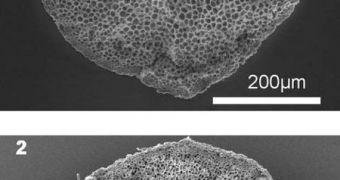The geological record shows that our planet experienced a period of low temperatures some 12,900 years ago. This time frame has been dubbed the Ice Age, and experts have believed for a long time that it was caused by a meteorite, or other space rock, slamming into Earth. However, new evidence appear to indicate that this idea is false, and that this is not what actually happened. Recent studies propose that the samples which were thus far used to support the impact theories are in reality nothing more than fossilized fungus and fecal matter from times long gone.
In the international scientific community, it is widely agreed upon that the Ice Age was the factor that triggered the disappearance of species such as the North American mammoth, as well as other large mammals. If the Ice Age did not exist, or affected the Earth only to a small extent, then why did these animals disappear, experts ask. It is also believed that the low temperatures forced the earliest human hunters to attempt to establish themselves in North America to die off. If the cold spell did not exist, why did these people disappear?
“People get very excited about the idea of a major impact causing a catastrophic fire and the abrupt climate change in that period, but there just isn't the evidence to support it,” explains University of London expert Andrew C. Scott, who was the lead researcher on the new investigation. In a statement that was released recently, the scientists say that the small spherules of carbon used to justify the impact theory actually appeared millennia before and after the onset of the Ice Age. This means that the atmospheric phenomenon might have not been connected to the space event.
But not everyone agrees with the new interpretations, which belongs to Southern Illinois University researcher Nicholas Pinter. The proponents of the impact theory argue that some of the spherules cannot be explained as fossilized fungus. They say that another thing that cannot be explained by terrestrial factors is the presence of nanodiamonds, which they say can only be produced on the surface by the pressure and temperatures associated with a meteor impact. The debate is bound to heat up on August 14, when members of the two opposing camps will face each other at a meeting held at the University of Wyoming, Space reports.

 14 DAY TRIAL //
14 DAY TRIAL //